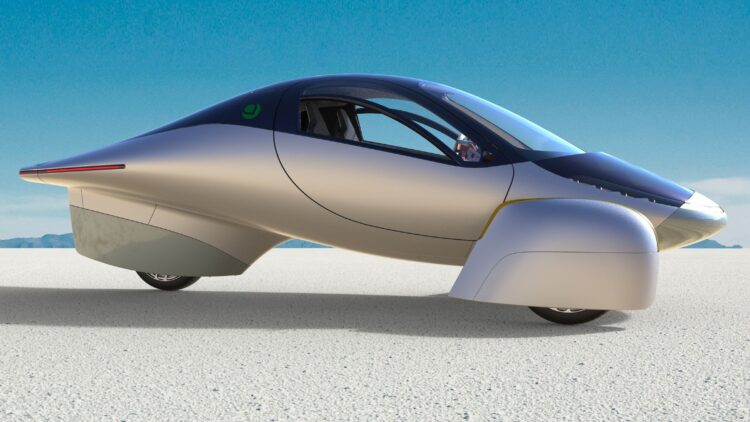As the world switches to renewable energy sources, the automobile industry is developing new technologies to support green energy. Photovoltaic technology is one such development which has recently gained significant attention. While electric vehicles have long been the preferred alternative fuel source and Japan’s hydrogen technological developments have been the latest trends in the alternative fuel source world, this new photovoltaic technology is sure to be making waves soon.
World’s first photovoltaic vehicle by Aptera Motors
The potential of solar-power technology has not gone unnoticed by the world. Since ideas of renewable energy first started gaining attention, solar power was one of the first ideas to be harnessed by industry. However, electric energy was the choice for the automobile industry when it came to developing alternative fuel sources. Now, Aptera Motors is showcasing innovation in bringing solar to the automobile world.
Their new photovoltaic vehicle runs on a hybrid system of both solar and electricity. This next-generation thinking showcases complete discard of fossil fuels in favor for a hybrid system which utilizes two different alternative energy sources. Aptera Motors has reportedly said that the car can go up to 40 miles per day when running only on solar, and up to 1,000 miles on a single electric charge.
How photovoltaic technology operates
Photovoltaic vehicles operate on the same principal as how solar panels work. The cars are equipped with photovoltaic solar panels capable of transforming sunlight into electricity. What is even more revolutionary about Aptera Motor’s first solar-powered car is that the car is expected to be sold for $35,000. This is significantly less than what current hybrid and electric cars go for which is a major milestone in alternative technology.
One of the most significant limitations holding back both customers and producers with alternative fuel source cars is their cost to buy and produce. While there is substantial technological innovation for sustainability, to make production widespread is expected to cost much more than what current internal combustion cars cost to produce. Similarly, consumers are not easily convinced to purchase electric vehicles or other alternative fuel source vehicles when the cost is out of their price range.
Crowd-funding initiatives for production
Currently, Aptera Motors is trying to get funding to create a mass-production facility down in Carlsbad. They have raided $33 million raised through their Accelerator Program so far and has amassed over $100 million from crowd funding. Aptera Motors is reportedly well on its way to funding the initial phases of production, including the procurement of tooling and the buildout of production-intent vehicles for testing and validation. We could very well see one of their vehicles on the road.
As Aptera Motors continues to develop its solar electric vehicle, the implications for the automotive industry are important. The successful integration of solar technology into a personal vehicle could pave the way for a new era of transportation, one that prioritizes sustainability without sacrificing performance or convenience. What is useful about these vehicles is that solar power technology has already been in production for some time and would not be a foreign concept to consumers.
In a time when consumers are increasingly concerned about climate change and environmental issues, Aptera’s commitment to sustainability resonates strongly. The hybrid solar vehicle represents a shift in how we view personal transportation—moving away from reliance on fossil fuels and toward a future powered by renewable energy. If successful, an affordable sustainable car would be revolutionary in shifting the hold internal combustion engines currently have on the market.
Other alternative fuel source vehicles we may being more widespread on the road include hydrogen technology vehicles which are becoming more advanced each year.

